Sustainable Laundry Practices: Save Energy & Water Now
This article will cover the importance of sustainable laundry practices, focusing on reducing environmental impact, saving resources, and maintaining clothing quality. Readers will discover actionable steps they can take to make their laundry routines more eco-friendly.
They will learn about the impact of conventional laundry methods and gain practical tips for optimizing washing machine use, choosing sustainable products, drying clothes efficiently, and addressing microfiber pollution. Additionally, advice on general clothing care for longevity will be shared.
1. Why sustainable laundry matters: The environmental impact
1.1 Water waste
Traditional laundry practices consume significant amounts of water. A standard top-loading washing machine can use up to 40 gallons of water per load, while older models may use even more. Front-loading machines are generally more efficient, using around 15-30 gallons per load, but the cumulative water usage is still substantial.
To put it in perspective, the average American family washes about 300 loads of laundry per year; that’s a lot of water! Utilizing water conservation methods, using efficient washing machines like a quality front-loader versus a top-loader and doing full loads of laundry help drastically reduce water usage.

1.2 Energy consumption
A large portion of the energy used in laundry comes from heating the water. Washing machines use a significant amount of electricity, and dryers are even more energy-intensive. For instance, a typical washing machine might use 500 watts, while a dryer can consume up to 5,000 watts.
Heating water accounts for the majority of a washing machine’s energy consumption, often around 90%. By switching to cold water washing, a household can drastically reduce its energy usage. Choosing an Energy Star-certified washing machine and dryer can also lead to substantial energy savings. This label indicates that the appliance meets strict energy efficiency guidelines.
1.3 Chemical pollution
Many conventional laundry detergents and fabric softeners contain chemicals that are harmful to the environment. Phosphates, for instance, contribute to water pollution by causing excessive algae growth, which depletes oxygen levels and harms aquatic life.
Fragrances and dyes can also cause allergic reactions and skin irritations. Some detergents contain “quats” (quaternary ammonium compounds), which can trigger asthma and may have negative effects on reproductive health. These chemicals enter waterways through wastewater, impacting ecosystems.
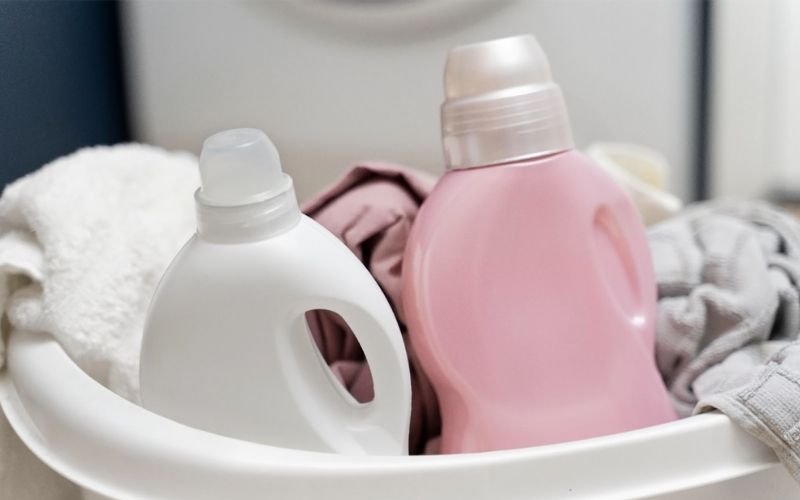
1.4 Microplastic pollution
Synthetic fabrics like polyester, nylon, and acrylic shed tiny plastic particles called microfibers or microplastics during washing. These microplastics are too small to be filtered out by most wastewater treatment plants, and they end up in rivers, lakes, and oceans.
Marine life can ingest these microplastics, leading to bioaccumulation of toxins in the food chain. The long-term effects of microplastic pollution on ecosystems and human health are still being studied, but the pervasiveness of this issue is a growing concern.
2. Practical steps for sustainable laundry
2.1 Washing machine optimization
2.1.1 Choose the right machine
Selecting an energy-efficient washing machine is a fundamental step towards sustainable laundry. Front-loading machines are generally more water and energy-efficient than top-loading models. Front-loaders use a tumbling action that requires less water, and their high spin speeds extract more moisture, reducing drying time. Top-loaders, especially older models with agitators, tend to use more water.
Pros and cons:
- Front-loaders: Pros: More water-efficient, energy-efficient, gentler on clothes, higher spin speeds (less drying time).
- Front-loaders: Cons: Can be more expensive upfront, longer wash cycles.
- Top-loaders: Pros: Typically less expensive upfront, shorter wash cycles.
- Top-loaders: Cons: Less water-efficient, less energy-efficient, can be harsher on clothes.
Look for the Energy Star label when purchasing a washing machine.
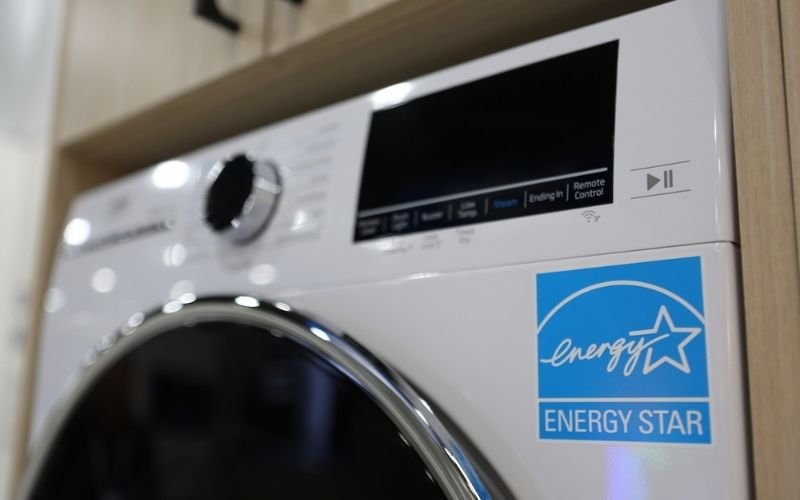
2.1.2 Wash full loads
Washing full loads of laundry is a simple yet effective way to conserve water and energy. Running a half-empty washing machine wastes resources. However, it’s important to distinguish between a “full” load and an “overloaded” machine. Overloading can prevent clothes from getting properly cleaned and can strain the machine’s motor. A properly loaded machine allows clothes to move freely and ensures effective cleaning.
2.1.3 Use cold water
Washing clothes in cold water is one of the most impactful changes a household can make. Heating water accounts for the vast majority of energy used during laundry. Modern cold water detergents are formulated to be effective even at low temperatures.
Many people believe that hot water is necessary for cleaning, but this is often a misconception. Cold water is sufficient for most laundry loads, and it can even be better for removing certain types of stains, like blood and sweat.
2.1.4 Choose the right cycle
Modern washing machines offer a variety of wash cycles, each designed for specific types of fabrics and soil levels. Using the appropriate cycle can optimize water and energy usage.
- Eco-mode: This cycle uses lower temperatures and less water, making it the most environmentally friendly option.
- Delicate cycle: Suitable for delicate fabrics, this cycle uses less agitation and lower temperatures.
- Normal cycle: For everyday laundry, use when necessary.
- Heavy-duty cycle: This cycle uses more water and higher temperatures, and it should only be used for heavily soiled items.
2.1.5 Proper detergent dosage
Using the correct amount of laundry detergent is crucial for both cleaning effectiveness and environmental protection. Overusing detergent doesn’t necessarily lead to cleaner clothes; in fact, it can leave residue on fabrics, require extra rinsing (wasting water), and contribute to chemical pollution.
Always follow the detergent manufacturer’s instructions and use a measuring cup or scoop. Consider using slightly less detergent than recommended, especially if you have soft water.
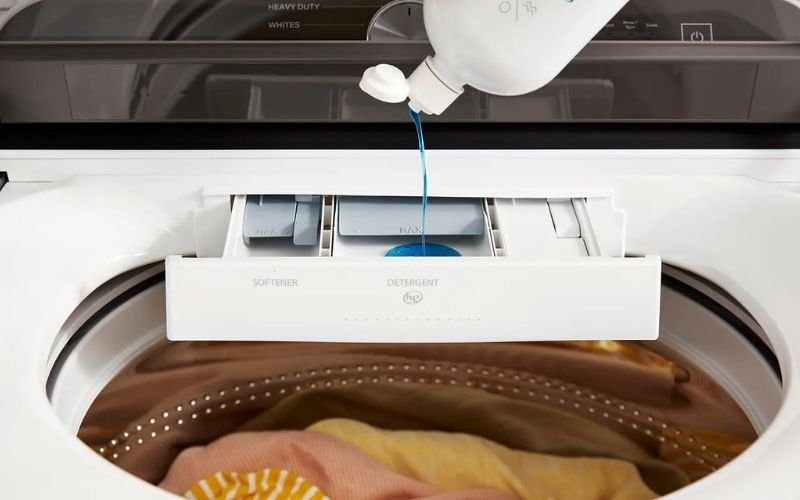
2.2 Choosing eco-friendly laundry products
2.2.1 Understanding detergent labels
Navigating the world of laundry detergents can be confusing, with many products making “green” claims.
Here’s a breakdown of common certifications and terms:
- EPA Safer Choice: This label indicates that the product meets the U.S. Environmental Protection Agency’s standards for safer chemical ingredients.
- EWG Verified: The Environmental Working Group’s verification mark signifies that the product avoids EWG’s ingredients of concern and provides full transparency.
- Biodegradable: This term suggests that the product can break down naturally in the environment. However, there’s no standard definition, so the timeframe for biodegradation can vary.
- Plant-based: These detergents are made using plant-derived ingredients.
- Phosphate-free: Phosphates are harmful to aquatic ecosystems, so choosing phosphate-free detergents is essential.
- Fragrance-free: Fragrances can cause allergies and skin irritation. “Fragrance-free” indicates that no synthetic fragrances have been added.
- Hypoallergenic: This term suggests that the product is less likely to cause allergic reactions, but it’s not a regulated term.
- Non-toxic: Indicates the product is not poisonous.
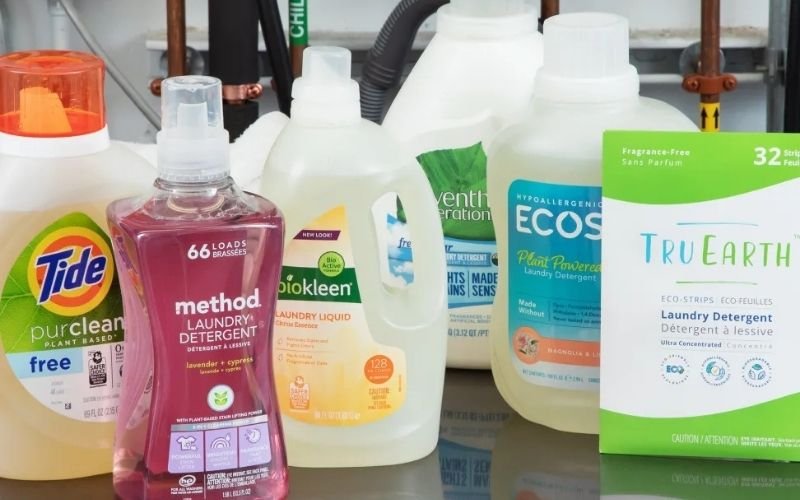
2.2.2 Types of eco-friendly detergents
Eco-friendly detergents come in various forms, each with its own advantages and disadvantages:
- Liquid: Traditional liquid detergents are widely available, but they often come in large plastic jugs. Concentrated versions reduce packaging waste.
- Powder: Powder detergents typically come in cardboard boxes, which are more easily recycled than plastic.
- Strips: Laundry detergent strips are a relatively new innovation. They are lightweight, concentrated sheets that dissolve in water, minimizing packaging waste.
- Pods: Pods are pre-measured doses of detergent, offering convenience. However, some pods have plastic packaging that may not be fully biodegradable.
- Sustainable detergents: Look for terms on labels; for example, “EPA Safer Choice” can be your signal it is a sustainable detergent.
2.2.3 DIY detergent options
Making your own laundry detergent is a cost-effective and environmentally friendly option.
Simple recipe:
- Combine 1 cup of washing soda (sodium carbonate), 1/2 cup of borax, and 1 bar of grated castile soap (or 1 cup of soap flakes).
- Mix well and store in an airtight container.
- Use 1-2 tablespoons per load.
Safety precautions:
- Always wear gloves and eye protection when handling washing soda and borax, as they can irritate the skin and eyes.
- Store homemade detergent in a clearly labeled container, out of reach of children and pets.
- Vinegar: White vinegar can boost cleaning action, but it is acidic, do not combine with other chemicals, only add to the designated fabric softener dispenser.

2.2.4 Fabric softener alternatives
Conventional fabric softeners often contain harmful chemicals, including “quats” that can trigger asthma and potentially harm the reproductive system.
Alternatives:
- Vinegar: White vinegar is a natural fabric softener and helps remove detergent residue. Add 1/2 cup to the rinse cycle. Vinegar’s acidity helps to dissolve any remaining detergent, leaving clothes soft and residue-free.
- Wool dryer balls: These reusable balls reduce static cling and soften clothes in the dryer.
2.2.5 Bleach alternatives
Chlorine bleach is a harsh chemical that can damage fabrics and harm the environment.
Alternatives:
- Oxygen bleach: Oxygen bleach is a gentler alternative that releases oxygen to break down stains. It’s color-safe and biodegradable.
- Lemon juice: Lemon juice is all natural, soak clothes with a generous amount, and leave overnight.
2.3 Drying sustainably
2.3.1 Air drying
Air drying is the most sustainable way to dry clothes. It uses no energy, reduces wear and tear on fabrics, and leaves clothes smelling fresh.
Tips:
- Use a clothesline outdoors whenever possible. Sunlight has natural disinfecting properties due to UV rays.
- If drying indoors, use a drying rack in a well-ventilated area.
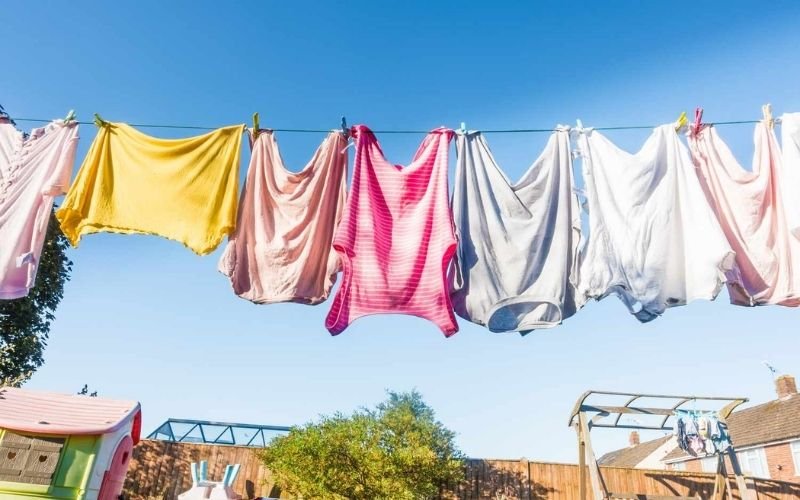
2.3.2 Dryer efficiency
If you must use a dryer, follow these tips to maximize efficiency:
- Clean the lint trap: Clean the lint trap after every load. A clogged lint trap restricts airflow, making the dryer work harder and use more energy.
- Use dryer balls: Wool or plastic dryer balls help separate clothes, allowing for better airflow and faster drying.
- Don’t overdry: Over-drying wastes energy and can damage fabric fibers. Use the automatic or moisture-sensing setting if available, which stops the cycle when clothes are dry.
- Consider a heat-pump dryer: Heat-pump dryers are more energy-efficient than conventional dryers. They use a refrigerant system to recycle heat, significantly reducing energy consumption.
2.4 Addressing microfibers
2.4.1 Install a microfiber filter
Microfiber filters are designed to capture the tiny plastic particles that shed from synthetic fabrics during washing. These filters attach to the washing machine’s discharge hose and prevent microfibers from entering wastewater. Studies have shown that microfiber filters can capture a significant percentage of microplastics, with some filters capturing up to 90%.
2.4.2 Wash synthetic fabrics less frequently
Reducing the washing frequency of synthetic garments (polyester, nylon, acrylic) can minimize microfiber shedding. Consider airing out these clothes or spot-cleaning them instead of washing them after every wear.
2.4.3 Use a washing bag
Washing bags, such as the Guppyfriend bag, are designed to capture microfibers during the wash cycle. While washing bags may not be as effective as external filters, they can still reduce the number of microfibers released. Be aware that they don’t eliminate the problem entirely, but they offer a partial solution.
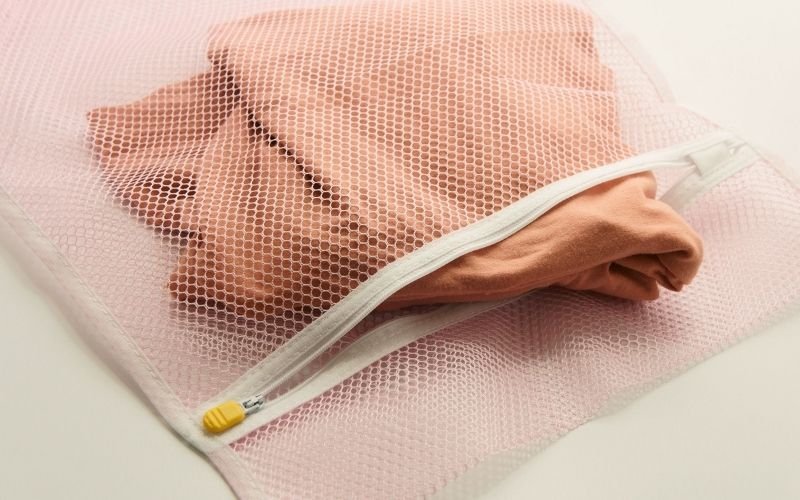
2.5 Wash clothes less
2.5.1 Spot clean
Spot cleaning is an easy way to not have to do a load of laundry. For example, if you drop food on your shirt, try to remove the stain instead of putting the entire article of clothing in the wash.
2.5.2 Air out clothes
Airing out clothing can help them to be refreshed. This is useful when clothes are not necessarily dirty; however, they have a smell (like smoke) on them.
3. Caring for your clothes, sustainably
3.1 Read care labels
Understanding care labels is essential for maintaining clothing quality and extending garment lifespan.
Common symbols:
- Washing symbols: Indicate the recommended water temperature and wash cycle.
- Drying symbols: Specify whether the garment can be tumble-dried and at what temperature.
- Ironing symbols: Show the appropriate ironing temperature.
- Dry cleaning symbols: Indicate whether the garment requires dry cleaning.
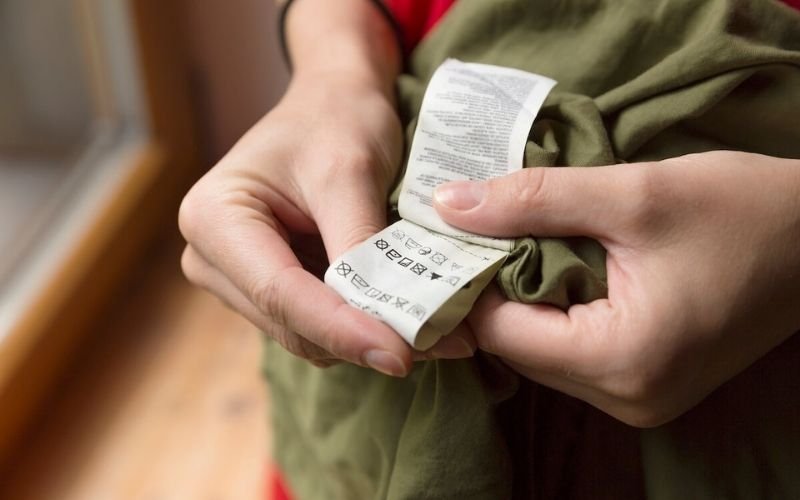
3.2 Turn clothes inside out
Turning clothes inside out before washing helps protect the outer surface from abrasion, fading, and pilling. It also reduces the likelihood of snags with other garments.
3.3 Mend and repair
Instead of throwing out damaged clothes, learn basic sewing skill to fix minor issues.
4. Related questions
4.1 Is cold water washing really effective?
Yes, modern cold water detergents are formulated to clean effectively at low temperatures.
4.2 Are eco-friendly detergents more expensive?
The prices of eco-friendly detergents are often comparable to conventional detergents, and some DIY options are even more cost-effective.
4.3 How do I dispose of microfiber filter waste?
Dispose of the collected microfibers in the trash. Research is ongoing to find recycling solutions for this waste.
Read more:
Sustainable laundry is a multifaceted approach that involves making conscious choices about washing machine usage, detergent selection, drying methods, and clothing care. By adopting these practices, individuals can significantly reduce their environmental impact, conserve resources, and extend the lifespan of their clothes. Small changes, when adopted collectively, can make a big difference. Start incorporating these tips into your routine and encourage others to do the same.






















